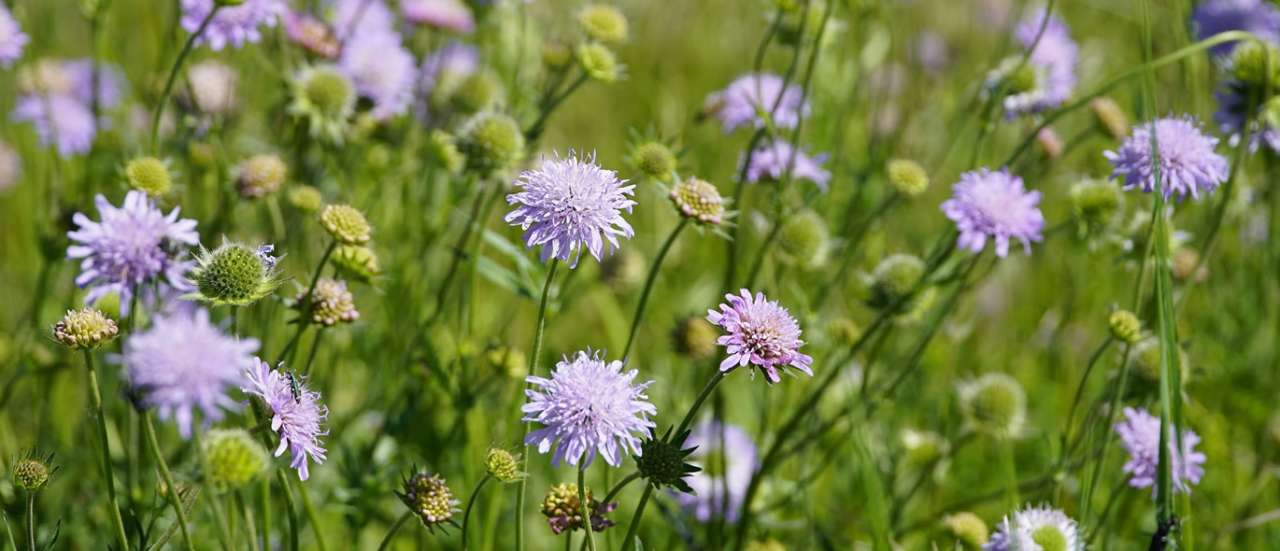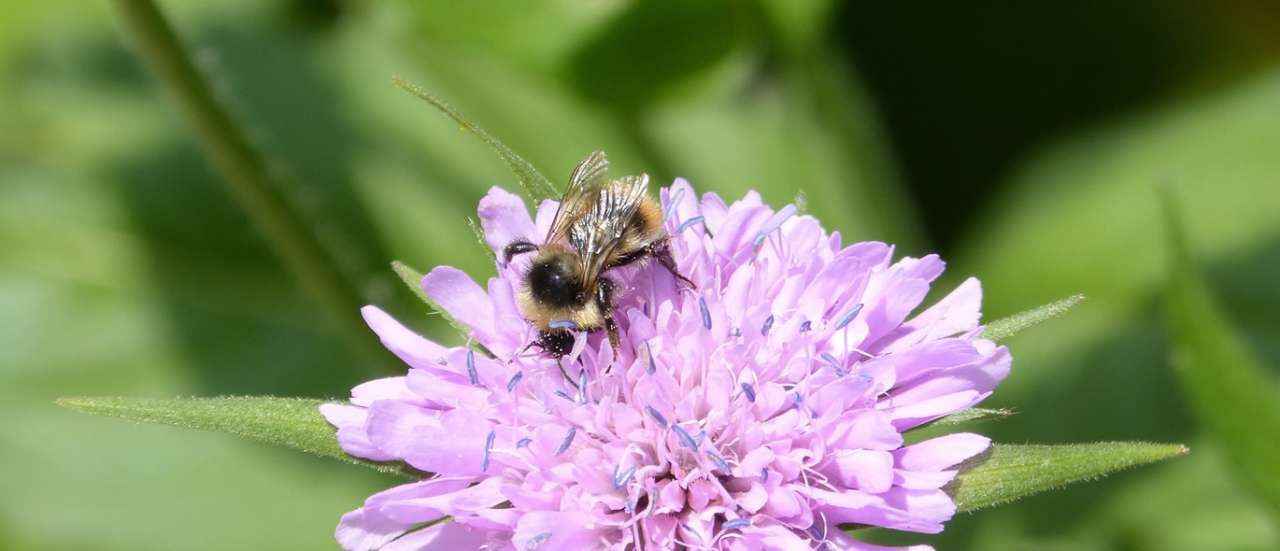Scabious isn't the most attractive name for this plant and the common name of 'Pincushion Flower', whilst apt, doesn't exactly inspire notions of a garden paradise; yet this meadow flower is as attractive in its appearance to us as it clearly is to pollinators. Its flower heads, which are large, relative to the wiry stems they are produced on, can add a lovely sense of movement in the garden as they bob and sway in the breeze, with shorter varieties standing much more firm. Colours range from white, through pale blues and pinks, to darker purples, reds and almost black. They also make a great addition to a cut flower garden for those who like to capture some of their garden beauty and bring it indoors.
It's worth noting that the umbrella name 'Scabious' covers the botanical names of Scabiosa (which tends to cover the blue and white shades), Knautia (often more red in colour), Cephaliaria (which is generally yellow) and Sucissa.

Where and How to grow:
Almost all scabious tend to form neat and compact clumps of foliage that rarely reach more than 50cm wide and yet the stems upon which the flowers are formed can range from as little as 10cm in height, with the likes of 'Pink Mist', to a rather impressive 2.5m in the case of Scabiosa gigantea. This makes them a very useful plant for filling in gaps through mixed perennial borders, as they won't start to overcrowd their neighbours.
Scabious are very versatile and are as popular in a more formal setting, where more compact varieties can hold a very neat appearance, as they are in more informal cottage and prairie style gardens. Grown amongst herbaceous perennials and flowing grasses they can be used to add accents of colour and movement. They can also be used to underplant shrubs, the branches of which can even offer support to the flower stems of taller varieties.
Whatever your style of garden however, scabiosa will require well-draining soil in a sunny location and won't last if their roots spend too long in the wet, with poor performance in the shade.
Annual varieties can be sown from seed and this is best done indoors over autumn and winter, potting on seedlings as soon as they are large enough to handle and planting out in the spring when the last frosts have past.
For perennial varieties:
- Dig a hole as deep as the pot and a little larger ensuring that their is good drainage.
- As they are essentially meadow plants, there is no real need to add fertiliser or compost - in fact such addition can even make the plant a little too leggy.
- Remove the plant from its pot, loosening any roots that may have become pot-bound (it's always good practice to give the pot a good watering an hour or so beforehand).
- Position the root-ball to the centre of the hole, making sure that the ground is level with the soil level in the pot – be sure not to plant it any deeper.
- Once positioned, you can then start to backfill the hole, gently firmly the plant in give it a good watering.
Scabious care:
Again, as a meadow flower, these really do require very little care. Some of the taller varieties may need support or staking of you want to keep them in a tidy formation and dead-heading will encourage more blooms throughout the season. If there is a particularly hot summer (which is rare) they can get powdery mildew which can be prevented with a bit of a mulch just to keep some moisture round the roots but this generally isn't necessary.
Propagation:
Many varieties of scabiosa will seed freely or seed can be collected in autumn for sowing indoors in preparation for the following spring. Alternatively, as with most clump-forming perennials, they can be propagated by division which should be done every three to five years in the spring. Some cultivars like the popular 'Butterfly Blue' are sterile and so can only be propagated by division.
Scabious Companions:
As mentioned above, scabious are versatile plants and are great used as a fillers amongst other herbaceous perennials or grasses. Here are some mixes we think look great:
- Mixed amongst yellow or orange achillea and some stachys, the lavendar/blue varieties of scabiosa such as 'Butterfly Blue' can offer a lovely softness and contrast in a cottage style border, whilst also attracting pollinators..
- Scabious of all types look well in any 'meadow' planting, weather it be a border to attract wildlife to the garden, or an entire field and so pair well with other wild flowers (and cultivars of wild flowers) such as cornflower, corn poppy, lychnis and harebells.
- Scabious also look great alongside light, feathery grasses such as stipa tenuissima adding colour and movement as their flower heads bob amongst the swaying foliage.
 Cover image by Image by Petra from Pixabay
Cover image by Image by Petra from Pixabay




